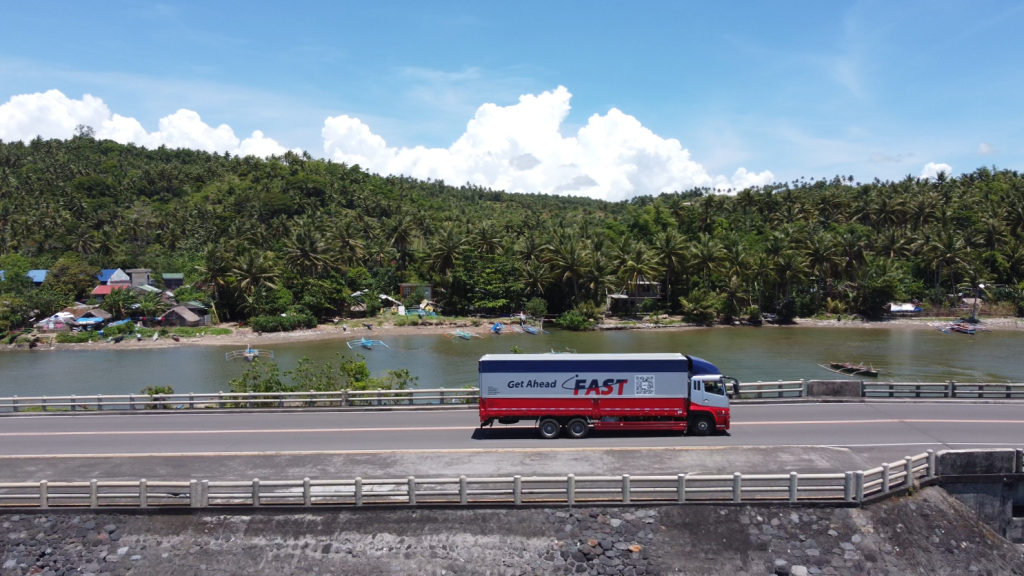
Businesses constantly search for strategies to cut operational expenses to improve their bottom line. This need is especially true for small and medium enterprises, which often operate with tighter budgets and fewer resources.
Among these efforts, supply chain professionals are especially focused on finding ways to reduce shipping costs. Less-than-Container Load (LCL) shipping is often a go-to option for businesses that do not have enough cargo to fill an entire container or truck. After all, LCL shipping rates tend to be lower than those for full container loads.
The good news is that small businesses can further explore various strategies to lower LCL rates and enhance their profitability. By making informed decisions, they can tap into cost-saving opportunities and improve their bottom line.
Understanding LCL Shipping Costs
Understanding the factors that affect LCL shipping rates is essential. Recognizing these factors can help you pinpoint areas where adjustments can be made to reduce transportation expenses.
Volume and Weight
The volume and weight of the cargo significantly impact costs for LCL shipment. Freight carriers typically charge based on the greater of the actual weight or the volumetric weight of a single container, calculated as length × width × height divided by a specific divisor. Larger or heavier shipping volumes generally incur higher costs due to the increased space and handling required.
Destination and Origin
Expenses for LCL shipment also vary depending on the distance between the origin and destination ports. Longer distances often result in higher transportation charges due to the extended travel time and fuel consumption. Additionally, certain routes or destinations may have higher fees due to logistical complexities or limited service availability.
Frequency of Shipments
The frequency of shipments can influence the cost per LCL shipment. Regular customers may benefit from negotiated rates or volume discounts, whereas infrequent shippers might face higher costs. Consistent shipping patterns can also lead to better supply chain planning and overall cost savings due to economies of scale.
Seasonal Demand
Seasonal fluctuations in shipping demand can impact LCL costs. During peak seasons, such as holidays or sales events, demand for shipping space increases, potentially leading to added costs. Conversely, off-peak periods may offer more competitive pricing due to lower demand.
Type of Goods
The nature of the goods being shipped affects LCL costs. Hazardous or oversized cargo may require special handling or additional documentation, leading to higher fees. Similarly, perishable or fragile items might necessitate temperature-controlled or extra-secure shipping arrangements, impacting the overall cost. When it comes to pricing, companies should work with logistics providers that provide competitive rates per container space.

Is LCL Shipping Cheaper than FCL
The cost of LCL shipping can be either lower or higher than that of Full Container Load (FCL) shipping, depending on several factors. Generally, LCL shipping tends to be more economical when shipping smaller quantities of goods that do not fill an entire container. Freight forwarders consolidate cargo from various customers to cover the cost of the truck or container for every trip, making LCL shipping a cost-effective option for those who need to transport smaller shipping volumes.
How to Reduce Costs on LCL Shipping
LCL shipments offer a cost-effective solution for those who lack sufficient goods to fill an entire container. Even within this transportation method, there are strategies to further cut costs in logistics operations. Here are some practical tips to help you minimize expenses while ensuring your shipments arrive safely and on schedule.
Optimize Packaging
Efficient packaging is crucial for reducing LCL shipping costs. The more space your goods take up, the higher your expenses will be. Businesses should thus utilize packaging materials that offer protection while occupying less container space. They should also find ways to maximize container space to make their cargo fit more efficiently within containers and minimize unused space.
By reducing this unused space, you lower the volume of your shipments, leading to significant cost savings. Every cubic meter saved can greatly impact your overall shipping bill. Make it a priority to regularly assess and refine your packaging and shipping strategies here.
Consolidate Shipments
Another effective strategy for reducing LCL shipping costs is consolidating shipments. Combining smaller shipments into one larger shipment can significantly lower costs. If other businesses are shipping to the same destination, consider pooling your shipments together. You can also work with a freight forwarder who specializes in consolidation services.
Consolidating shipments lowers costs and enhances container utilization, ultimately reducing the cost per unit for all parties involved. Shipment consolidation not only saves money but also minimizes the environmental impact by reducing the number of trips needed for transportation.
Plan Shipments in Advance
Advanced planning can go a long way in cutting down LCL shipping costs. Last-minute shipments often come with added cost. By planning your shipments, you can take advantage of more cost-effective options and avoid last-minute surcharges.
In addition, scheduling shipments during off-peak times can lead to significant savings for shipping lines. Off-peak seasons usually see lower freight rates due to decreased demand. Planning also allows businesses to align their shipping schedules with production cycles, thereby avoiding unnecessary storage and handling costs.
Select Strategic Shipping Routes
Choosing the right shipping routes can also impact your LCL shipping costs. Routes that minimize transit time and costs are always preferable for customers looking for affordable options. It’s essential to analyze various factors, such as shipping frequency, port congestion, and seasonal demand fluctuations, as these can influence overall shipping expenses too.
Sometimes, opting for a slightly longer route might be more cost-effective because it can accommodate a larger volume of cargo, ultimately leading to lower rates per unit. Exploring these options not only helps in reducing costs but also opens more opportunities for businesses to access new markets.
Compare Rates and Services
It’s important to take the time to research and analyze the offerings of various shipping companies, as this can lead to significant savings. Don’t hesitate to ask for discounts, especially if you’re a frequent shipper.
Establishing long-term partnerships with carriers can not only result in discounted pricing but also improve service levels. When you work with the same carrier over an extended period, you often benefit from more personalized service, as they become familiar with your shipping needs and preferences. A long-term relationship with a reliable carrier can provide stability and predictability in shipping costs, allowing for better budgeting and planning.
Be Flexible with Shipping Dates
Flexibility with shipping dates can lead to significant cost-saving opportunities. By planning shipments and being open to various dates, you can access more affordable options that reduce overall expenses. This proactive approach to the shipping process allows you to make the most of available resources, ultimately benefiting your bottom line.
Similarly, maintaining flexibility with pickup and delivery dates enables you to take advantage of carrier promotions or off-peak rates. By aligning your shipping schedule with these opportunities, you can achieve considerable savings over time, making your logistics operations more efficient and cost-effective.
Choose the Right Shipping Partner
Selecting a reliable and cost-effective freight forwarder is essential for reducing LCL shipping costs. It’s important to consider more than just the upfront expenses; you should also evaluate the reliability and expertise of your shipping partner. A trustworthy freight forwarder will ensure that your cargo arrives at the right place and on time.
Delays and mishandling can lead to unnecessary costs, which can be mitigated by selecting a reliable partner. By consolidating shipments with a trusted logistics provider, you can unlock additional savings. A skilled freight forwarder will assist in optimizing your shipping strategy, minimizing avoidable expenses, and ultimately enhancing the cost-effectiveness of your logistics operations.
Maximize Cost Savings with the Right Freight Forwarder
Reducing LCL shipping costs is crucial for enhancing profitability, particularly for small businesses. By optimizing packaging, consolidating shipments, planning ahead, selecting strategic routes, comparing rates, remaining flexible with shipping dates transit times, and choosing the right shipping partner, you can realize significant savings.
Businesses can benefit from partnering with an experienced and reliable freight forwarder that specializes in LCL shipments. By working with a knowledgeable logistics provider, you can access valuable insights and resources to streamline your shipping operations, reduce expenses, and ultimately boost your bottom line. Consider these strategies when planning your next LCL shipment to maximize cost savings and improve business efficiency.
FAST Logistics Group, the leading end-to-end logistics company in the Philippines, offers LCL shipping solutions to businesses and customers. With our LCL solutions, businesses do not need to pay full-container rates to get reliable deliveries. Instead, they only have to pay per cubic meter. We deliver cargo along these routes:
- Route 1: Cebu – Ormoc – Tacloban – Manila and vice versa
- Route 2: Cebu – Bacolod – Iloilo – Caticlan – Manila and vice versa
- Route 3: Cebu – Cagayan de Oro – Davao and vice versa
To benefit from this transportation solution, customers are encouraged to bring their cargo to our Cargo DOK (Drop-Off Kiosks). Our outlets are staffed with trained professionals who efficiently handle and inspect your cargo, ensuring prompt and accurate processing. By choosing FAST, you can count on timely delivery of your goods, anywhere, every time. Connect with our Solutions Experts or visit our site to learn more
Categories
-

FAST Ahead
Includes case studies and testimonials of our partners as well as other featurettes from industry experts
-

FAST Hacks
We simplify logistics terms and provide practical tips and solutions for the DIY in you
-

FAST Highlights
Know more about our history, various brands, achievements, and news updates
-

FAST Moments
Get to know the people of FAST, our employee programs, as well as our various ways of giving back to the community
-

FAST Solutions
Learn more about the various logistics solutions that we cater to and offer our clients, as well as tech innovations, and service facilities


